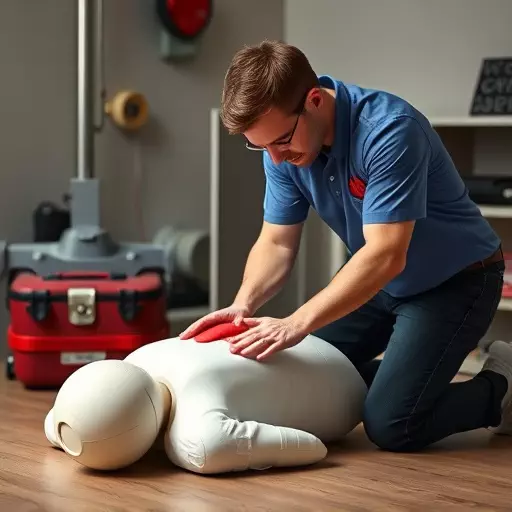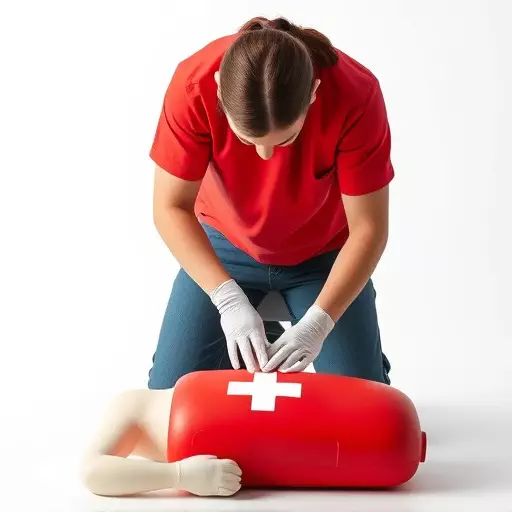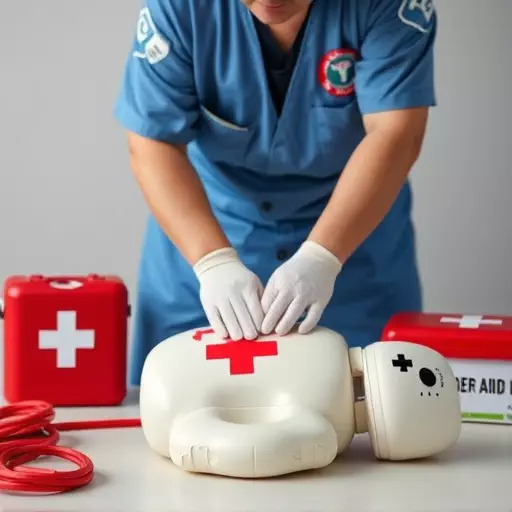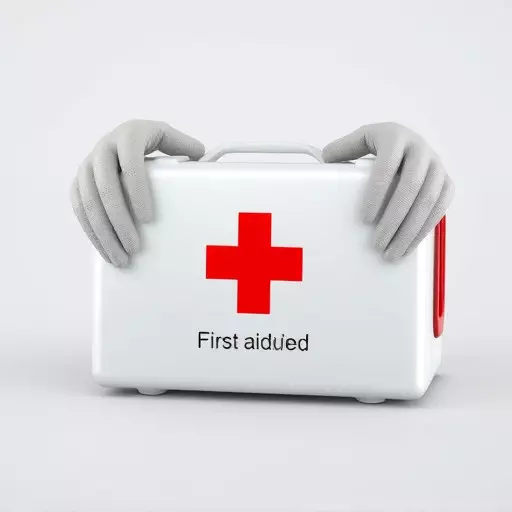Everyone should consider Basic Life Support (BLS) training, including CPR, as a crucial personal skill for community safety. This training equips individuals to handle critical situations, with certifications guided by regional healthcare organizations. While job or volunteer roles may have specific training needs, BLS knowledge benefits everyone, enabling them to potentially save lives through swift action in medical emergencies. Regular refresher courses ensure skills remain sharp and up-to-date, fostering a culture of community resilience.
“Discover the life-saving power of Basic Life Support (BLS) training and Certified Professional Resuscitation (CPR). This comprehensive guide explores why everyone should consider learning these essential skills. From understanding the core concepts of BLS to examining real-world instances where CPR has made a difference, we delve into the impact of such training. We’ll also break down the first aid and CPR certification requirements, highlighting the path to expertise. Learn how widespread CPR training enhances community safety and why continuous learning is vital for keeping your skills up-to-date in first aid.”
- Understanding Basic Life Support Training: Why It's Essential for Everyone
- The Role of CPR in Saving Lives: Real-World Success Stories
- First Aid and CPR Certification Requirements: Unlocking the Path to Expertise
- Enhancing Community Safety: The Impact of Widespread CPR Training
- Continuous Learning and Updates: Keeping Your Skills Current in First Aid
Understanding Basic Life Support Training: Why It's Essential for Everyone

Everyone should consider basic life support (BLS) training, also known as first aid and CPR training, as an essential part of their personal growth and societal contribution. It equips individuals with the knowledge and skills to respond effectively in critical situations where someone’s life is at risk. BLS training covers a range of life-saving techniques, from cardiopulmonary resuscitation (CPR) to managing choking, wounds, and other common emergencies.
This training is crucial for meeting first aid certification requirements, which vary by region but generally involve passing a recognized course that teaches hands-on skills and knowledge. Having this certification not only empowers individuals to act in emergency situations but also instills confidence. It’s important to note that while some jobs or volunteer roles may mandate specific levels of first aid training, everyone can benefit from understanding how to provide basic life support.
The Role of CPR in Saving Lives: Real-World Success Stories

Cardiopulmonary Resuscitation (CPR) is a vital tool in saving lives, especially during medical emergencies. When someone experiences cardiac arrest, minutes count, and CPR can significantly increase their chances of survival until professional medical help arrives. Basic Life Support (BLS) training, which includes CPR, empowers individuals to respond effectively and potentially turn a tragic situation into a survivable one.
Real-world success stories abound, highlighting the impact of first aid and CPR training. For instance, in many cases where bystanders performed CPR, victims have been successfully revived and returned to their families. These stories underscore the importance of widespread BLS training, as it enables more people to become potential lifesavers. Moreover, understanding the first aid certification requirements ensures that individuals are prepared to act swiftly and confidently when faced with critical situations.
First Aid and CPR Certification Requirements: Unlocking the Path to Expertise

Earning a First Aid and CPR (Cardiopulmonary Resuscitation) certification is an empowering step toward becoming an expert in basic life support. This invaluable training equips individuals with the skills to respond effectively during medical emergencies, potentially saving lives. The process begins by meeting specific first aid and CPR training requirements set by recognized healthcare organizations or regulatory bodies. These standards ensure that trainees gain comprehensive knowledge and practical hands-on experience.
The typical path involves attending accredited courses delivered by certified instructors. These programs cover a range of topics, from recognizing and assessing emergencies to performing CPR, using defibrillators, and administering first aid. Upon completion, individuals must pass both written and practical exams to obtain their certifications. Regular updates and refresher courses are also essential to maintain proficiency, ensuring that certified practitioners stay prepared to handle real-life situations effectively.
Enhancing Community Safety: The Impact of Widespread CPR Training

Widespread CPR (cardiopulmonary resuscitation) training plays a pivotal role in enhancing community safety by equipping individuals with critical life-saving skills. In an emergency, every second counts, and having a large pool of trained first aiders can significantly improve survival rates for those experiencing cardiac arrest or other medical emergencies. Basic Life Support (BLS) training goes beyond CPR, teaching individuals how to recognize and respond to various life-threatening situations, including choking, heart attacks, and strokes.
With more people equipped with basic life support skills, communities become better prepared to handle sudden medical crises. This widespread first aid and CPR training ensures that help is readily available until professional medical services arrive. Meeting the first aid certification requirements becomes crucial in fostering a culture of community resilience where bystanders can confidently step in during critical moments, potentially saving lives.
Continuous Learning and Updates: Keeping Your Skills Current in First Aid

Staying up-to-date with the latest advancements in first aid and CPR (Cardiopulmonary Resuscitation) training is crucial for maintaining effective skills. Continuous learning ensures that individuals are equipped to handle various emergency situations, as guidelines and techniques evolve over time. Regular refresher courses and workshops allow practitioners to stay current, ensuring their knowledge aligns with the most recent medical research and best practices. This ongoing education plays a vital role in enhancing confidence during real-life emergencies, enabling individuals to provide basic life support (BLS) effectively when it matters most.
The dynamic nature of first aid means that new research and protocols are constantly emerging. For example, updates to CPR techniques, such as changes in chest compression rates or the addition of new rescue breathing methods, can significantly impact survival rates. By committing to regular training, individuals not only maintain their certifications but also gain access to life-saving knowledge and tools. Meeting first aid certification requirements becomes easier when professionals stay engaged with ongoing education, ensuring they are prepared to respond swiftly and confidently in any emergency scenario.


